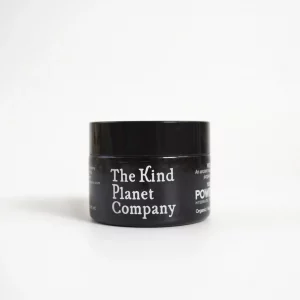Powerful Skincare, Skin Lessons
Skincare Lessons
Another (hopefully simple) Skincare Lesson.
What the 🤬 is an occlusive? And how is it different to an emollient? Wait, what exactly defines an emollient? Aren’t humectants important too?
Gone are the days of simply applying Ponds Cream at night.
We have attempted to make this a simple skincare lesson and do the hard work for you.
H.O.E.
No, these are not the latest essential Wordle letters. But it is possibly the most important acronym for your basic skincare routine. Humectants. Occlusives. Emollients. Remember this because these are your three categories of moisturisers and your pathway to soft + dewy skin.
First, why moisturise? Simply put, to prevent dryness. This seems a basic question to ask, but let’s expand on that simple answer.
Moisturising plumps surface skin cells to improve appearance (glow) and texture. It also nourishes aging skin. The older we get, the more pollution, sun, poking and prodding our skin sees. We also lose ceramides, hyaluronic acid, and fatty acids. Adding these elements not only feeds and rebalances aging skin but also protects the skin from damage and dryness.
Using humectants, occlusives and emollients properly are your pathway to moisturised skin done right.
Occlusives are made up of molecules that are too large to penetrate the skin. Because these massive molecules don’t sink into the skin, they instead sit on top of the skin’s surface and act as a protector.
What makes them function as a protector is the fact that they repel water. Oily occlusives aren’t friendly with water, so they stop the water sat on your skin from drying up and evaporating.
Waxes are the best occlusives. And the best wax? Happywax. Happywax is an unbleached sustainably sourced palm wax made up of triglycerides. It is so amazing that it mimics the chemical properties of beeswax, but it is 100% vegan.
Emollients are moisturising agents that are a favourite in treating dry skin conditions such as eczema. They famously soften the skin and keep it supple. All while decreasing inflammation and soothing itchiness.
Much like occlusives, emollients seal in moisture and protect the skin, preventing transepidermal water loss. What makes them different to occlusives is their extra ability to rebuild the skin barrier. Emollients apply lipids (fatty acids) where the skin’s natural lipids have been depleted.
Mineral oil-derived emollients are by far the most popular. Due to our children’s battle with severe eczema, petrolatum emollients been part of our family’s daily regime for a decade. The need in our home for a complimentary plant-based emollient/occlusive combo gave birth to POWER BALM; formulated to contain our favourite ingredients from Mother Nature.
Butters and oils contain the necessary lipids & fatty acid components that make up your ideal emollient. Shea Butter and Jojoba Oil are some of the most effective natural emollients, along with Rosehip, Sunflower, Hemp, Palm Kernel and Red Palm Oils. Nourish your skin with these plant powered emollient butters and oils with POWER BALM and Golden Body Oil.
Humectants are also an essential moisturising component, especially during dry winter months.
Occlusives and Emollients serve to lock in moisture, while Humectants draw in moisture. Humectants do this by bonding with water molecules and holding these molecules in the skin. You may have heard of Hyaluronic Acid & Glycerin, two absolutely amazing humectants that really work for your skin. Humectant ingredients like these are essential for dry skin during low humidity months. Cruelty-Free Kitty has a great blog on recommended humectants that are kind to skin and not tested on animals.
Make these ingredients really work for your skin by applying them in H.O.E. order. Humectants first and foremost, following by an occlusive/emollient combo such as POWER BALM to lock in those humectants.
-
 Power Balm™£15.50
Power Balm™£15.50

